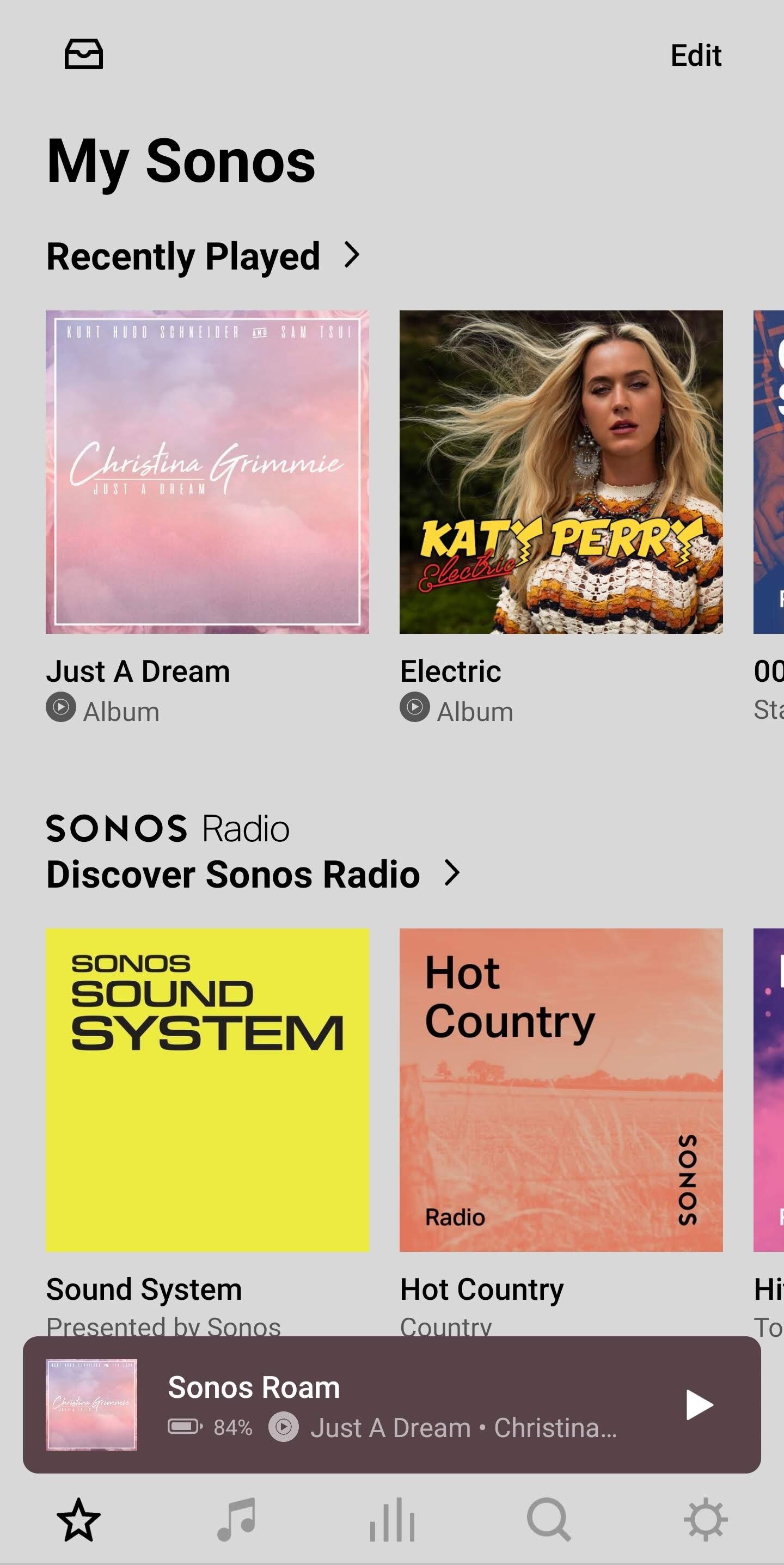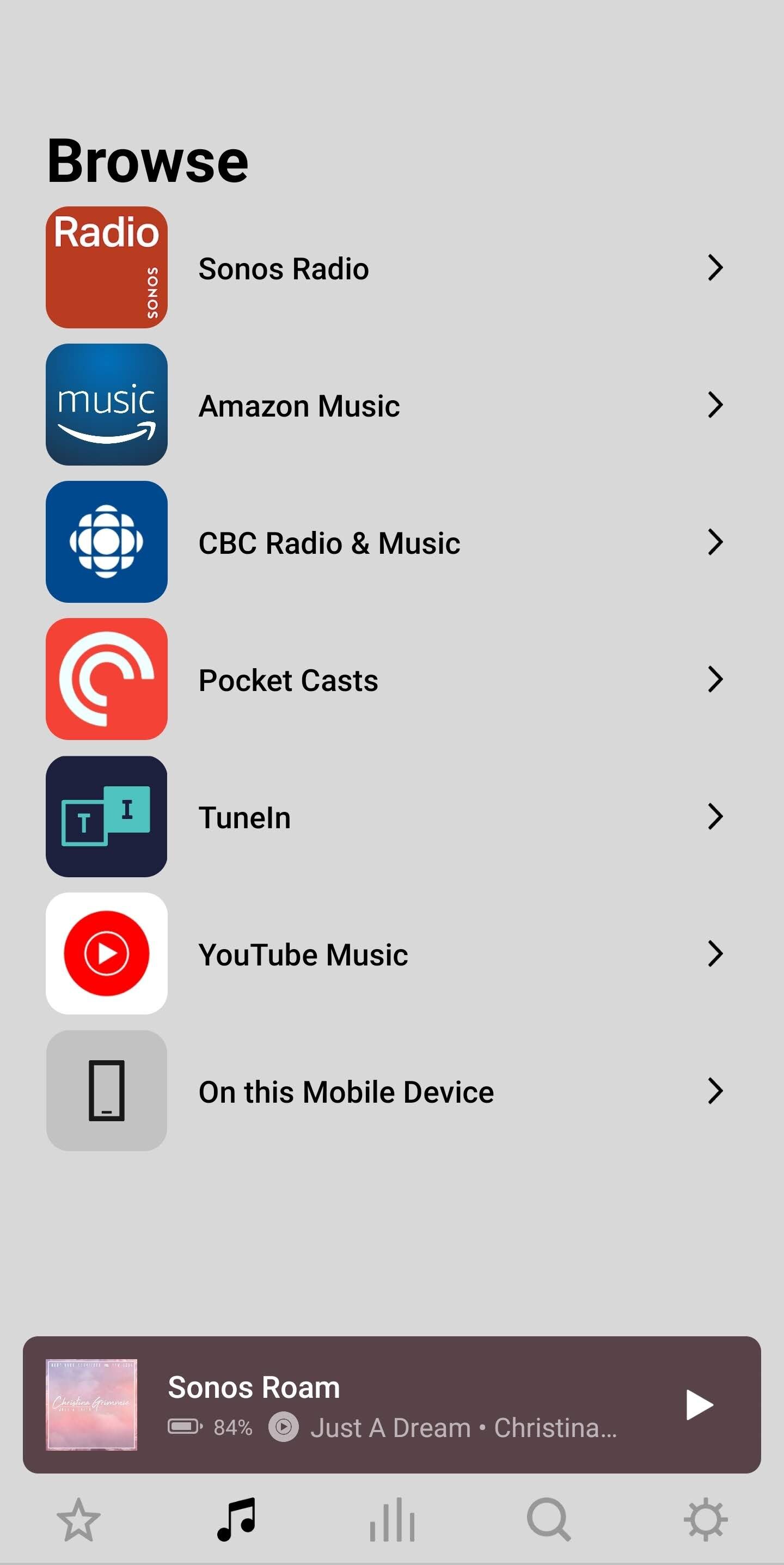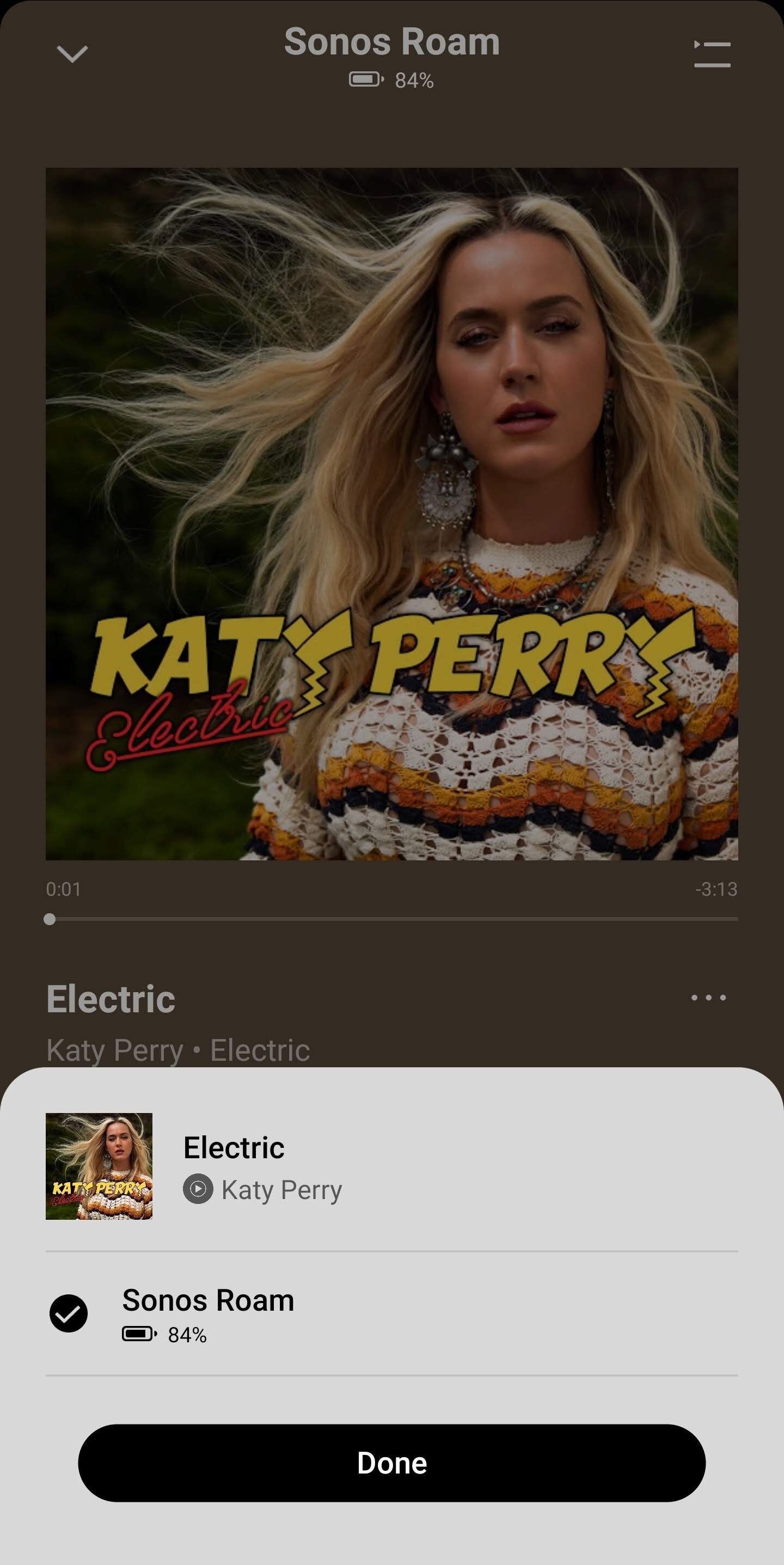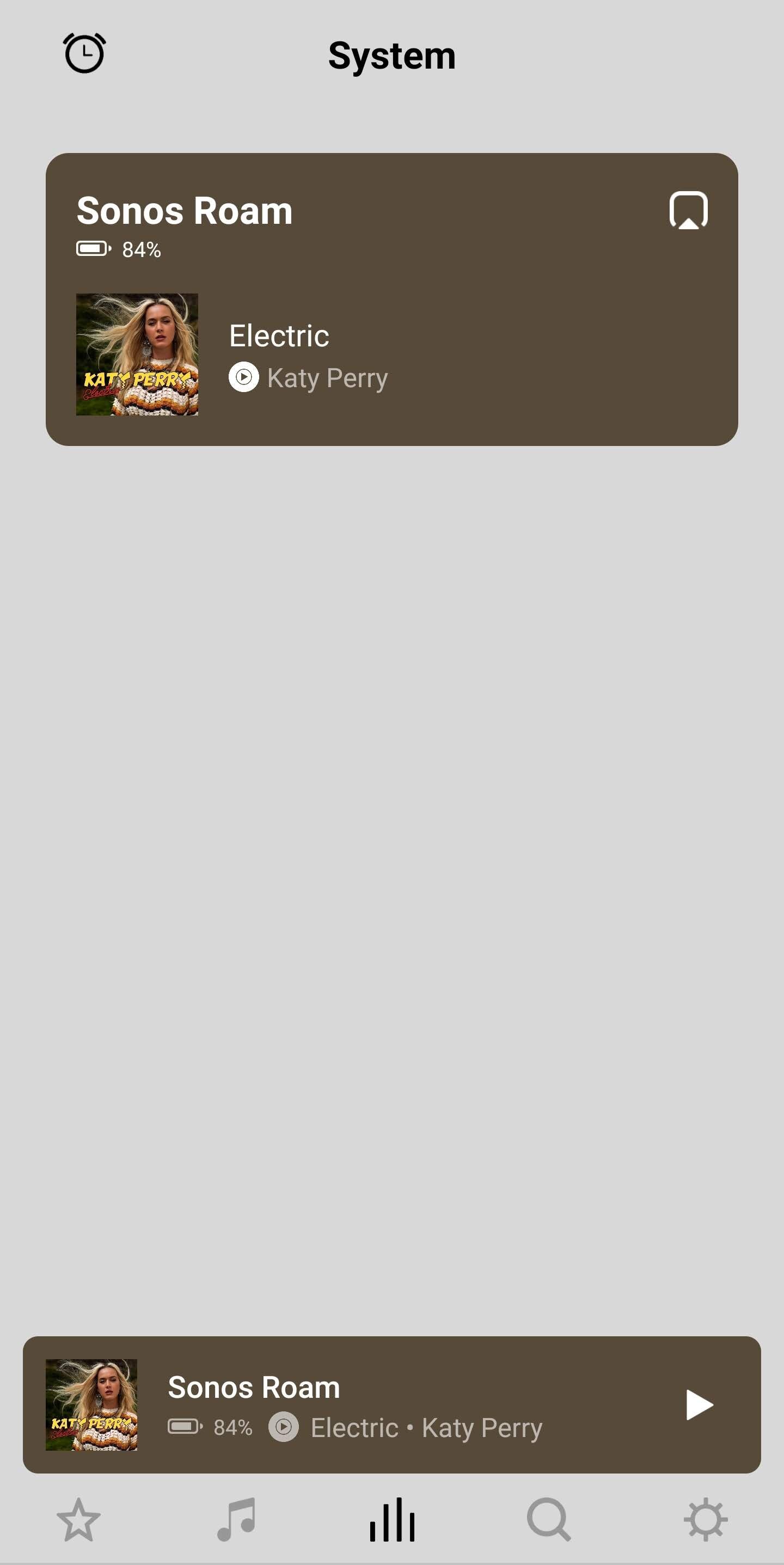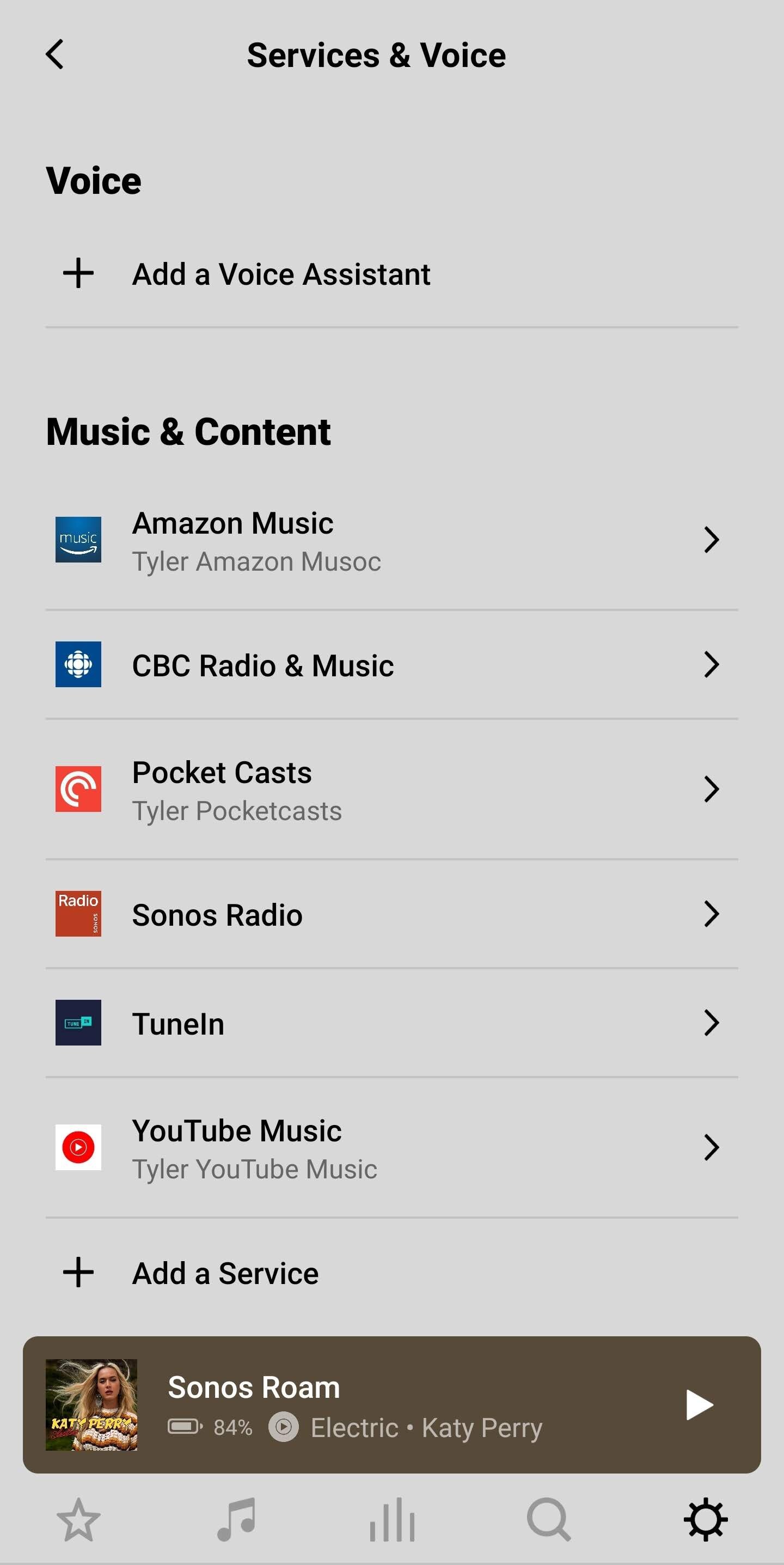A few weeks ago, in search of a new portable speaker to use outdoors on the deck and in the yard, I purchased the new Sonos Roam speaker. This is the first Sonos product I’ve ever owned and while I will review that device specifically next, first I want to talk about the overall Sonos ecosystem. Sonos isn’t a new service, but it is new to me, and learning the ins and outs, good and bad, and quirks of using Sonos has been interesting.
What Is Sonos?
So what is the Sonos System? At the core, Sonos is a wifi connected speaker system. The company features everything from the afore mentioned Roam portable speaker that costs $220 and features bluetooth along with the wifi connect, all the way up to home theatre systems that can cost thousands of dollars that connect directly to a TV. My use has exclusively been on the Roam, so I’m not able to test every feature that the Sonos system has to offer, but I have a pretty good idea how it works.
In many ways users get more benefits out of having multiple Sonos devices in their home. Yes, users can use a single speaker, be it the Roam, the standalone Sonos One, etc. But where the biggest benefits of the Sonos eco system come from connecting multiple speakers together. We’ll get to that, but first, a primer on how Sonos works.
Sonos Was Chromecast and Airplay Before There Was Chromecast and Airplay
The Sonos system is network connected. Most products can be plugged into a wired network connection, but I think most customers will use their devices on wifi. This makes them different than bluetooth speakers where sound is sent directly from a phone or tablet to the speaker, but instead comes directly to the speaker from the internet. This brings several advantages, like better sound than bluetooth can provide, not having the issue where other sounds like notifications getting passed to the speaker from the phone. But it also enables things that aren’t otherwise possible with Bluetooth. Users with multiple Sonos speakers can play audio through any number of them. So different speakers in different rooms can be playing the same audio, or speakers in one room can play one thing, while speakers in a different can play another thing. The flexibility of the Sonos system is one of the biggest draws. There is an elephant in the room here that must be mentioned. Google has a similar technology with Google Cast, what many people know of as Chromecast. Google’s Cast technology supports audio as well as video, but Sonos’ technology predates Google Cast, and Sonos is actually suing Google in several jurisdictions for patent and IP infringement. As of today, there are no significant rulings on these lawsuits, but it is worth noting.
One App To Rule Them All…. With Limits
With the system running on wifi, it isn’t possible to just fire up Spotify, Apple Music, or YouTube Music and play audio to Sonos straight from there. How Sonos accomplishes this complex, multi-room capable system is through a controller app. The Sonos app. Sonos provides controller apps for iOS/iPad OS, Android, Amazon’s FireOS, Windows, and Macs. I will go out on a limb and say that everyone interested in a Sonos device will have at least one of those devices, and will have some way of controlling the Sonos system. The Sonos app manages setting up the speakers, putting them into groups, and even which speakers to play from. Sonos can play audio from many services through connections within the Sonos App. Sonos supports most of the major streaming services and apps, and in my case the services I use, YouTube Music, Pocket Casts, and Tunein Radio are all supported. Sonos of course supports Apple Music, Spotify, and most of the major services most people use. There is a possibility that some niche services that don’t see wide use aren’t supported by Sonos, and in that case options for playing that on Sonos speakers are limited, especially for Android users. Weirdly, one thing that Sonos does not support natively is Apple Podcasts, which is, by all accounts, the single most popular podcast app out there. Users can use Airplay to get Apple Podcasts to Sonos speakers, but the omission of Apple Podcasts highlights how Sonos depends on services being added directly into the Sonos system.
Playing Audio through the Sonos app is straightforward, but can be somewhat limited. You can select the service from the Sonos app, and then access all the content in that service. The challenge there is that the UI is different, and requires users to learn how to navigate a service through the Sonos app instead of the familiar dedicated app they may be used to. There is a definite learning curve there, but nothing that can’t be overcome. The limitations are more obvious in terms of actual playback controls. Sonos has a standard playback control window, and does not support things that are unique to that app. For me, this is noticed mostly for podcast playback. I use Pocket Casts, and I generally listen to podcasts at 1.5x speed. But through the Sonos app, I cannot control the playback speed at all. There are some workarounds to this, depending on the Sonos device and platform I’m playing podcasts from, but not being able to take full advantage of all the features of dedicated apps is a huge hole in how Sonos works.
Android User? Prepare to Feel Slighted
As mentioned, there are some workarounds for some of Sonos’ limitations, depending on the combination of devices and platforms. The Sonos Roam features Bluetooth connectivity, so when I listen to podcasts I can just switch it to Bluetooth and listen that way. That eliminates some of the advantages of the Sonos system, but at least it does work for me. Because my phone is Android, that is the only option I have to play back podcasts at 1.5x speed. If I were attempting to listen to podcasts on other Sonos products that do not have Bluetooth, I wouldn’t be able to listen at 1.5x speed. That’s a huge limitation for me, with my Android device. However, Sonos supports Apple’s Airplay, meaning for users with an iPhone or iPad, audio can be sent directly to a Sonos system from an Apple device, getting around some of those limitations in the Sonos app. This is, however, only useful to Apple users, and leaves the 50% of people in North America who use Android (and 80% worldwide), at a disadvantage. Supporting Google Cast would help solve this issue, just like how Sonos supports Airplay, but Sonos has, to this point, chosen not to support Google Cast. Whether or not this is due to the ongoing court. Battles between Sonos and Google is unclear, but regardless as to why, not supporting Google Cast is bad for users, and leaves Android users as second class citizens in the Sonos ecosystem.
Another small quirk has to do with how the account system works on Sonos. Anyone can connect to a sonos speaker system with the Sonos app, but features are limited unless you log in with the account used to create the sonos system. This isn’t an issue most of the time, except there is no way to have multiple account holders. To give someone else the ability to add services, or create/modify speaker groups, I would have to give them my sonos account password instead of being able to give them access in another way. I wish there was a more elegant solution to this.
I Dream of Multi-Room Audio
Now, I only have a single Sonos speaker, so I’m not able to test some of the advanced features. But as mentioned, users with multiple Sonos speakers can play Audio through any number of them they wish. Sonos’ move into home theater has also been interesting, with the Sonos Beam and Arc soundbars. Those products connect to TV’s for better TV audio, but can also play music through a wireless connection like any other sonos speaker. Other Sonos speakers, like the Sonos One can be used as rear speakers as well, to give a full surround sound setup.
Sonos’ business model is very Apple like here, in that it makes expensive products that it wants people to love, so they buty more expensive products. It is very easy to spend thousands of dollars on Sonos equipment. The Sonos Roam is their least expensive product at $230, with the popular Sonos One priced at $250 and prices going up from there. At the time I write this, a bundle with a Sonos Beam soundbar, Sonos Subwoofer, and two Sonos One SL speakers for a 5.1 surround sound system costs $1685 on Sonos’ website.
Conclusion
Overall, I am impressed with the Sonos ecosystem, with caveats. I think that what Sonos does with the network connectivity is very well done, and works very well for most users. With the promise of great sounding speakers, and ease of setting up a system that can work across an entire home, Sonos obviously has a great solution, evidenced by the fact that the company has been around since 2002. My main frustration with Sonos is that the system works significantly better for users of Apple products. iPhone users are much more easily able to overcome some of the limitations of the Sonos system because of Airplay support, where Android users have little recourse except to hope that Sonos adds support for a feature or service they want. This is a bit less of an issue on the Bluetooth capable Roam and Move speakers, but going back to my original issue, if I owned a Sonos One speaker I would have no way of playing podcasts at 1.5x on that speaker from my Android device, where if I had an iPhone I could. This is something Sonos needs to address, one way or another, especially with Android having a larger marketshare than Apple. But, taking those issues out, Sonos has a pretty fantastic ecosystem, and I can definitely see more Sonos products in my future.

